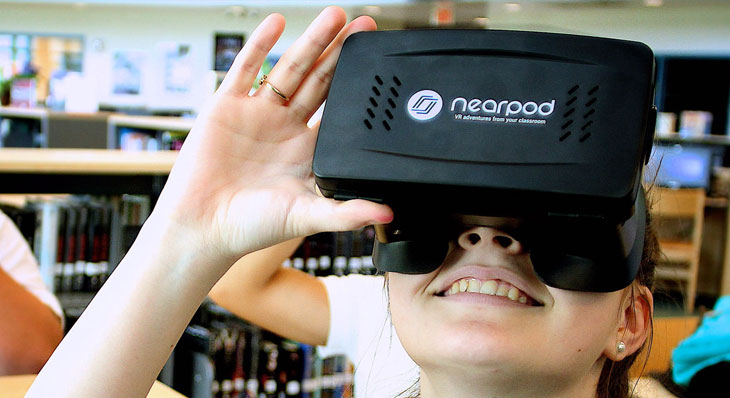
The Power of Exposure: Nearpod Virtual Reality
@SharpsburgES#bragupwarriors Blown away students inspiring career research/planning @nearpod w/vr trip 2 Stanford pic.twitter.com/lRDvcG4Uuo
— James Funkhouser (@2coolcounselor) April 1, 2016
This is a guest blog by James Funkhouser, a school counselor from Frederick, MD, USA.
“A child’s course in life should be determined not by the zip code she’s born in, but by the strength of her work ethic and the scope of her dreams.” – President Obama
As a school counselor, I consider President Obama’s quote daily when working with students. How can I empower this student to overcome his/her barriers to success? One of the largest barriers to students in my schools is access. Because of our location, it is difficult to expose students to the many opportunities beyond the borders of the county. Sure, we can talk about great colleges, universities, technical schools, and careers, but what meaning can students associate with these areas if they have never been immersed in such an environment?
So what do you do? How do you transcend the confines of travel expenses and time? You bring those places to the students. I had experienced first hand the impact of virtual reality at the International Society for Technology and Education conference in June of 2015. My mind was reeling from the possibilities. Where could I take students? Instead of talking to them about careers, I could put them in the middle of the action. They could stand in the middle of an operating room, stare down the arm of a crane, or immerse themselves in a NASA space station. The possibilities seemed endless. Not only could I take students to careers, but I could provide them with virtual tours of colleges and universities. The next step was not so easy. At the time, access to virtual tour programs was limited and cumbersome.
Then came Nearpod’s virtual reality tool. Upon searching through this incredible feature, I came across a few images of Stanford University. Now, you may think that giving students a few 360 images may not do much. So did I, and yet the students had a transformative experience. Students felt that they had been transported to this university. They instantly noticed the size, scope, and design of the spaces. Their questions poured out from programming to student life. Instantly, we were having deep meaningful conversations about college in third grade. I was blown away.
Although the research on virtual field trips and their impact on student learning is limited, first hand experience shows that these virtual field trips lead to some powerful conversations and deep connections to content. I look forward to incorporating Nearpod with my students in the hopes that we can build more immersive experiences like this, and that we might expand from colleges to careers around the world.
Students should never be hindered from success based on the zip code they may live in or the access they have to a variety of career fields, college and university programs, and technical schools. With this new technology, we can empower students with the mindset they need to develop the work ethic to achieve any dream for which they have passion.
Learn more about Nearpod’s VR offerings by visiting https://nearpod.com/nearpod-vr.

Nearpod’s award-winning platform is used by thousands of schools around the globe, transforming classroom engagement.








